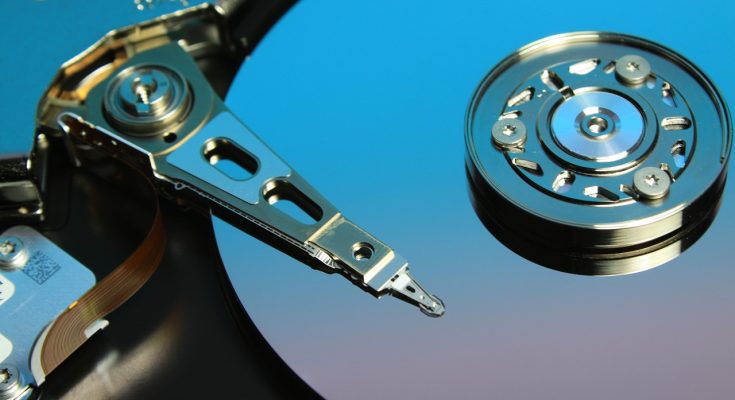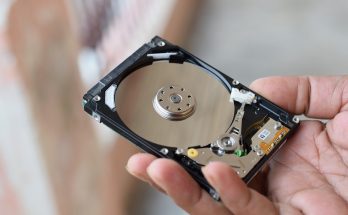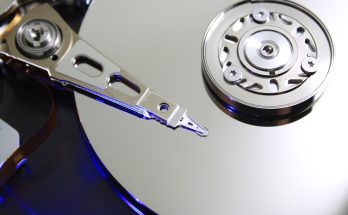Imagine your horror when you boot up your computer and find a missing partition. This is a common problem. The best partition recovery software can help, recovering up to 50% of lost partitions.
It might happen because you accidentally deleted it, had a partition table error, or used the wrong file system. But don’t worry, we’ve got you covered. This guide will show you how to get your data back and fix your partition.
Understanding Partition Basics and Common Issues
It’s key to know the difference between a disk and a partition. A disk is the physical storage, like a hard drive. A partition is a part of that disk. It helps you organize your files better.
Common Causes of Missing Partitions
Partitions can vanish for many reasons. This includes user mistakes, OS problems, power failures, disk damage, and malware. These issues can make it hard to get to your files. You might see error messages or have trouble booting up.
Difference Between Disk and Partition
Knowing the difference between a disk and a partition is vital. A disk is the physical storage, like a hard drive. A partition is a part of that disk. It lets you organize your data, install different OSes, and manage storage better.
Signs of Partition Problems
Partition issues can show up in many ways. You might see error messages, have trouble booting, or see “phantom” volumes. These problems can come from user errors, OS issues, power outages, disk damage, or malware. Spotting these signs is the first step to fixing your disk and partitions.
| Partition Layout | Description |
|---|---|
| Primary volumes only | A simple partition layout with a single primary volume. |
| One primary, one logical | A configuration with one primary volume and one logical drive. |
| One primary, two extended | A layout with one primary volume and two extended volumes. |
Essential Data Recovery Before Restoration
Before you try to fix a missing partition, it’s key to get back any important data. Tools like Disk Drill are great for this. They can find and get back lost or deleted files.
Disk Drill is a top tool for finding and getting back missing partitions. It uses smart scans to find deleted or damaged partitions. This helps a lot, even if you deleted a partition by mistake.
- Disk Drill’s advanced scanner can detect and recover lost or deleted partitions on your hard drive.
- The software lets you see the files you’re getting back before you decide to keep them. This makes sure you only get back what you need.
- Disk Drill works with many file systems, like FAT, NTFS, exFAT, and more. This makes it a good choice for many people.
It’s also smart to make a backup of your drive before you start trying to get back data. This keeps your files safe and makes sure you don’t lose anything important while you’re trying to fix things.
| Data Recovery Software | Recovery Rate | Pricing |
|---|---|---|
| Disk Drill | Recovered all files from various scenarios | $89.99 |
| EaseUS Data Recovery Wizard | Recovered all files from Recycle Bin | $69.95 |
| Stellar Data Recovery | Recovered around 50% of files from formatted drive, 80% from corrupted drive | $99.99 |
| AnyRecover | Recovered 92% of deleted files, 64% of missing files from formatted drive | $39.95 |
By focusing on getting back your data first, you can be sure your files are safe. Even if you need to rebuild a partition, your data is secure. This way, you avoid losing data and save yourself a lot of trouble.
Partition Recovery Methods and Tools
When you lose a partition, there are many ways to get it back. You can use Windows tools, special software, or command line commands. Each method has its own benefits to help you find your lost data.
Using Built-in Windows Tools
Windows has tools to help with partition recovery. The Disk Management console lets you make partitions accessible again. The DiskPart tool is more advanced, allowing you to manage partitions with commands.
Professional Recovery Software Options
For deeper recovery, tools like TestDisk and DiskGenius are great. They fix damage that causes partitions to go missing. They can scan quickly, rebuild partition tables, and work with many file systems.
People in the US and UK like these tools a lot. They say they work well to get back important data. You can buy licenses for personal or business use.
Command Line Recovery Techniques
If you’re good with the command line, tools like TestDisk and PhotoRec are for you. They let you fix partition tables and recover deleted data. They’re good for fixing very damaged systems.
These tools need some tech know-how. But they’re great for hard cases, giving you detailed control and recovery options.
| Recovery Tool | Supported File Systems | Licensing | Key Features |
|---|---|---|---|
| TestDisk | NTFS, FAT, Ext2/3/4, and more | Free and open-source | Partition table reconstruction, data recovery, file system repair |
| DiskGenius | NTFS, FAT, exFAT, Ext2/3/4, and more | Personal, Corporate, Unlimited licenses | Quick scans, partition recovery, advanced features like Last Chance recovery |
| PhotoRec | Extensive file system support | Free and open-source | File recovery from damaged or reformatted partitions |
Using these methods and tools can help you get back lost partitions. This keeps your important data safe and sound.
Advanced Partition Restoration Techniques
Advanced techniques are key for fixing complex partition issues. You can use Disk Management or DiskPart to recreate partitions. This helps restore your computer’s storage setup.
Using Windows installation media can also help. You can mount Windows image files and copy recovery files. This creates a new recovery partition, giving you access to system recovery options.
Disk Management and DiskPart in Windows are very powerful. They let you create, resize, and convert partitions. These tools are great for fixing disk layouts.
For tough partition problems, like a corrupted table or accidental deletion, advanced partition recovery software is essential. Tools like DiskGenius, CuteRecovery Free, and Wondershare Recoverit can scan and recover data. They can even rebuild partitions in hard cases.
These advanced methods can solve your hard drive recovery or disk partitioning problems. Knowing the right tools and methods helps you control your storage. This ensures your system works at its best.
Conclusion
Partition recovery is often possible, even when partitions seem lost or deleted. Knowing why partitions go missing helps a lot. This includes accidental deletion, errors in the partition table, or file systems not supported.
There are many tools and methods to help you get your partitions back. Windows has built-in tools, and DiskGenius is a top choice. It’s easy to use and has advanced features for all users.
Preventing partition loss is key. Regular backups and smart disk management can help a lot. But if you do lose a partition, this guide can guide you. It helps you recover your data with confidence.
FAQ
What is the difference between a disk and a partition?
A disk is the physical drive. A partition is a part of the disk with its own file system.
What are the common causes of missing partitions?
Missing partitions can happen due to user mistakes, OS errors, or power failures. Disk corruption and malware attacks also play a role.
What are the signs of partition problems?
Signs include error messages like “Unable to reset your PC. A required drive partition is missing.” or boot failures.
Why is it important to recover data before fixing partitions?
It’s key to recover data first to avoid losing it. Tools like Disk Drill can help get data back from missing partitions.
What are the methods for partition recovery?
You can use Windows tools like Disk Management and DiskPart. Also, tools like TestDisk and command-line tools are available.
What are the advanced techniques for partition restoration?
Advanced methods include using Disk Management or DiskPart to recreate partitions. For missing recovery partitions, a special Windows installation media process is needed.
Is partition recovery possible even when partitions appear to be deleted?
Yes, you can recover partitions even if they seem deleted. Knowing why partitions go missing and using the right tools can help.



